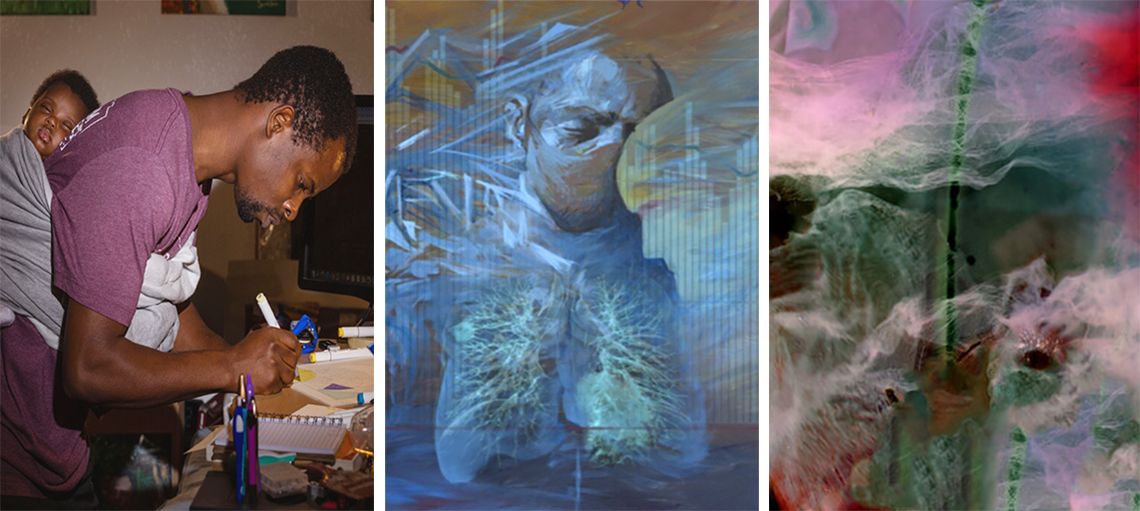COVID-19 era’s effects related in artworks by students, faculty
College students and faculty expressed the variety of hurdles the coronavirus presents in a series of artworks displayed in a virtual exhibit hosted by the Texas A&M Glasscock Center for Humanities Research.
“COVID has made life very difficult and complicated for all of us, but more so for international students,” said Haleh Moghaddasi, a Ph.D. architecture student in “Our Voices: Artistic Explorations of International Students,” one of the artworks in the virtual exhibit.
“We found ourselves in a pandemic in a new country, even lonelier than before and needing to be more self-dependent,” she said. “But international students always learned to be quiet and fight for success, no matter what. They learned to work through their pain, but also understand and respect others’ pain and help solve it.”
Moghaddasi’s exhibit piece included self-portraits that depict some of the wide variety of pandemic-era emotions.
Photographic imagery that depicts the multilayered experiences of the era’s contradictions, political divisions and misinformation are displayed in “Viral,” by Anatol Bologan, instructional assistant professor of visualization.
His artwork, he said, attempts to humanize the era’s experiences that otherwise appear as a disembodied world projected through screens and cameras.
In “Letting the Days Go By: 100 Days in Quarantine,” Krista Steinke, instructional assistant professor of visualization, chronicled her shelter in place by putting objects of everyday home life – hand sanitizer, strands of hair, cereal, for example —in homemade pinhole cameras and setting them outside.
The direct imprint created by the images on the camera’s negative, juxtaposed with the mark of the sun’s pathway rising and setting over the course of each exposure, helped to illustrate the passage of time, she said.
“A small vitamin pill or a tiny insect becomes entwined with the larger universe in the sky,” she said. “These small, seemly insignificant objects collectively relate to a bigger picture and reference how the ordinary everyday can be impacted by an epic event such as pandemic.”


